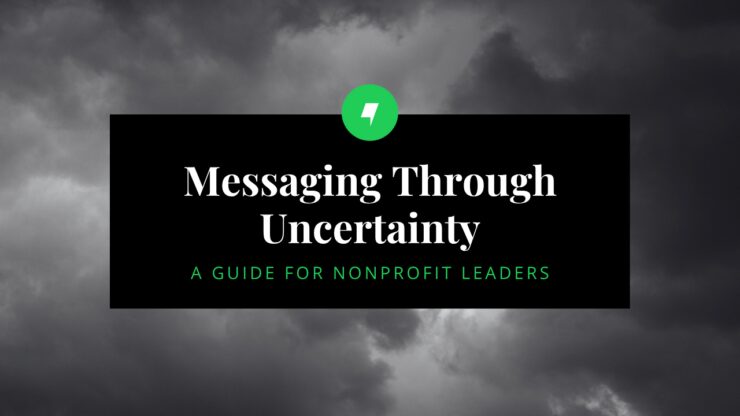Last week, Rebecca and Jessica spoke at Bernstein’s 2025 Philadelphia Nonprofit Forum held at Taller Puertorriqueno. The theme of the Forum, “messaging through uncertain times,” couldn’t have been timelier, especially for nonprofits.
The forum was designed for nonprofit leaders, foundation executives, and professional service providers, who are all grappling with similar challenges. From potential funding cuts to increased scrutiny on DEI efforts, staff burnout, and rising political polarization impacting mission work, the landscape is more turbulent than ever.
The main takeaway from Jessica and Rebecca’s presentation: while we can’t control the storms, we can control how we prepare for them.
Why Crisis Communication Planning Matters More Than Ever
The session started by asking how many attendees had a crisis communications plan in place. The response was telling, and not uncommon. Most organizations are so focused on their day-to-day mission work that they put off this critical planning.
Organizations that proactively plan for crisis communications consistently experience fewer bumps during their response, save critical time and resources, and perhaps most importantly, recover faster and emerge stronger.
Three Core Principles for Crisis Communications
When crisis hits, three principles should guide your messaging:
- Operate with transparency. Acknowledge what you know and what you don’t. Share your process, even if it’s not fully fleshed out. And avoid perfection paralysis. Silence often does more damage than imperfect clarity.
- Stay accountable to your mission. Your communication should address how the issue ties back to your organization’s purpose and values. It’s imperative to highlight the “why” behind your response.
- Lead with empathy. Center your messaging on people, not just facts. Acknowledge the fear, pain, or confusion that people may be feeling. Humanize the situation as much as possible, especially for your staff, community, and partners.
The Art and Science of Effective Messaging
Crafting an effective crisis message is both an art and a science.
The art lies in understanding two essential elements:
- Your purpose: What you want your target audience to think, feel, believe, or do
- Your appeal to their self-interest: What will motivate them to act favorably
This second point is crucial and often overlooked. A donor or funder may want to understand how you are planning to respond, while a community partner may need to understand how the situation impacts their constituents. Your core message might be the same, but how you frame it needs to speak to each audience’s specific interests and concerns.
The science of a message follows a simple formula:
- What happened (clear, concise facts only)
- What you’re doing about it (your plan, connection to values)
- What action you want your audience to take (specific, actionable steps)
Moving Forward with Confidence
Living through uncertain times doesn’t mean living in fear. It means being prepared, staying true to your mission, and communicating with clarity and compassion.
Your mission matters now more than ever. The communities you serve need you to lead and be clear, direct, and strategic in how you communicate. Whether you’re facing a funding crisis, political pressure, or any other challenge, remember that how you respond can strengthen your organization’s position and deepen stakeholder trust.
If you’re ready to develop a crisis communications plan for your organization or want to discuss how to strengthen your messaging during uncertain times, we’re here to help.
Posted In Crisis Communications, Media Relations, Nonprofit, Public Relations
 Rebecca Devine
Rebecca Devine 